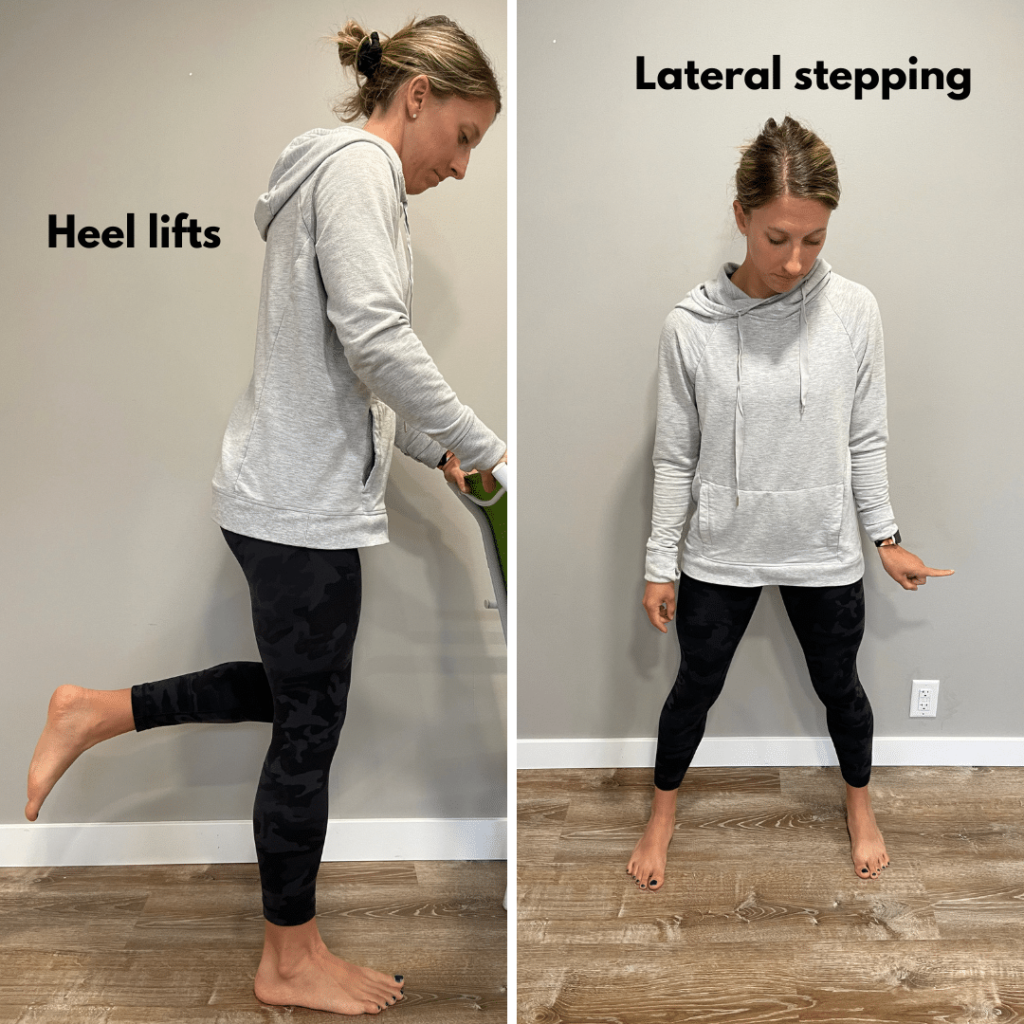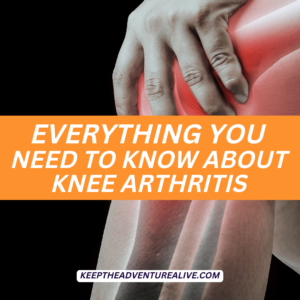Knee swelling also known as knee effusion can be common with knee osteoarthritis. Most people think that it is something that simply has to be dealt with but there are ways to reduce it! When your knee is swollen it can lead to stiffness and pain which can make daily activities like walking and stair climbing very difficult to accomplish. Most people believe that resting and icing are the two best treatments but actually that’s not the case. Learn the best way to reduce knee swelling that almost everyone misses in this article below.
Knee swelling or knee effusion can be a common symptom of osteoarthritis. You can learn more about the other symptoms of knee osteoarthritis in this article.
What causes knee swelling?
Your knee can become swollen due to a variety of reasons but here are the 4 primary reasons in relation to osteoarthritis:
- Overuse
- Inactivity
- Muscle imbalance
- Infection
Infection is the most important to rule out first as it can lead to serious complications if untreated. If an infection is present, you may notice other symptoms such as warmth and tenderness of the knee, fever, chills, increased fatigue, and/or loss of appetite. If you notice any of these symptoms accompanying knee swelling- it’s important to seek medical attention.
If knee swelling is existing on it’s own without the symptoms described above, it likely happened from overactivity and/or presence of muscle imbalances.
As a physical therapist, I have treated hundreds of patients that were dealing with knee swelling secondary to osteoarthritis. Activity levels can play a huge role in how swollen your knee becomes.
If you notice knee swelling, think about your recent activity levels. Too much and too little activity can create a fluid build up in your knee.
Activity helps to move fluid in and out of your knee but too much activity and high amounts of repetition that your body is not prepared for can lead to irritation, more friction inside the joint, and swelling.
For example, if you significantly increase how far you walk one day or if you spend hours on your feet working at an event, you may notice your knee hanging onto fluid.
On the other hand, too much time in one position, commonly sitting or lying down can lead to knee swelling. This is because your muscles act like a pump to push the fluid out. While sedentary, your muscles aren’t working so they aren’t able to pump the fluid out.
Lastly, if certain muscles are working harder than others and the joint isn’t well supported from all sides, swelling can sneak in. Thigh weakness as well as weakness in the muscles of the back of the leg (hamstrings) can be common culprits of knee effusion.
How to reduce knee swelling
It is commonly believed that in the presence of knee swelling, rest is necessary. This is not true if you have been dealing with on and off knee swelling for the past few months. Rest can actually make it worse.
When looking at how to reduce knee swelling, typical interventions such as compression, elevation, and ice are typically recommended.
If you have knee osteoarthritis, one of the most important ways to reduce and manage knee effusion is actually….
EXERCISE.
Think about it like this, your knee is swelling to alert you that a change needs to be made. Think of this related to activity once infection is ruled out.
If you are doing too much volume of repetitive tasks like walking, cycling, and/or running your knee may be telling you that it’s too much by becoming bigger. In order to decrease the size you have to decrease the amount of fluid. This can be done by mixing up your exercise routine.
Same thing applies if you aren’t exercising/moving enough. Your knee becomes bigger to alert you that it’s time to make a change. In this case, specific movements can also be very helpful.
If you are currently exercising and still noticing that your knee is holding onto fluid, it could be a sign that you need to mix up your routine. There may be muscle imbalances that are present. For example, does one leg feel stronger than the other? Do certain muscles feel tighter than others? These can be signs of muscle imbalances.
The KEY is finding the best movements that will help as not all movement is created equally when looking at how to reduce knee swelling.
What type of exercise helps?
One of the biggest mistakes I see people making, especially those with knee osteoarthritis, is doing the same type of exercise over and over again. This can actually lead to swelling..
In order to break the cycle, you have to move your body in different ways.
What I mean by this is including movements that activate muscles you may not use often including those that move you sideways and backwards.
I have found that including simple movements that introduce variety to your knee joint can be very powerful when it comes to reduce swelling and fluid on the knee.
A few examples include:
- Lateral stepping
- Heel lifts
- Walking backwards
- Banded forward and backwards walking
- Alternating side tapping
See the picture below for some examples.
The goal is to include movement that is different from the movement you typically do during the day. For most people this primarily includes walking forwards.
Think about the movements you do on an average day. Then think about what you usually do for exercise.
The go-to exercise for most people with osteoarthritis tends to be walking. But again, you’re moving forward. How can you mix up your current routine and introduce your body to new movements. This can really work wonders at reducing and preventing excess fluid on the knee.
Here is an article about how to mix up your walking routine that can also help to maximize your success at reducing knee swelling.

Other strategies in combination with exercise
There are other strategies that you can use in combination with exercise to reduce knee effusion/swelling.
Some of the most recommended strategies include:
- light massage
- compression sleeves and garments
- gentle movement
- elevation
If your swelling levels are not budging from appropriate amount and type of exercise + the strategies above, there may potentially be a need to get the fluid drained. To find out if this procedure is warranted for your specific situation, seek out your primary care or sports medicine physicians.
Conclusion
It is possible to bring your knee back down to normal size if it’s swelling secondary to osteoarthritis. It turns out rest likely isn’t what you need. Instead, gentle movement in different directions can help to activate the muscles needed to pump the fluid out.
Consistency is key. Following these strategies for only a select few days may not warrant long term results. Your body needs time to work.
Try movement with a few of the other strategies to see if your knee(s) respond(s). If it isn’t responding after a few weeks of consistency, there are other options to reduce knee swelling.
Knee swelling when walking?
If walking is becoming difficult secondary to knee effusion/swelling- I have a free guide just for you!
Learn the top reasons why walking is difficult with knee osteoarthritis so you know what to focus on to make it easier.
I often find most people don’t make progress simply because they aren’t sure what to do or where to start. This free guide will give you the knowledge you need to start taking action today.
Alyssa Kuhn
Disclaimer: This post is for general informational purposes only. It should not be used to self-diagnose and it is not a substitute for a medical exam, cure, treatment, diagnosis, and prescription or recommendation. It does not create a doctor-patient relationship between Dr. Kuhn and you. You should not make any change in your health regimen or diet before first consulting a physician and obtaining a medical exam, diagnosis, and recommendation. Move Well Age Well, LLC and Dr. Alyssa Kuhn, PT, DPT are not liable or responsible for any advice, course of treatment, diagnosis or any conclusions drawn, services or product you obtain through this post, video or site. Complete all exercises at your own risk.




